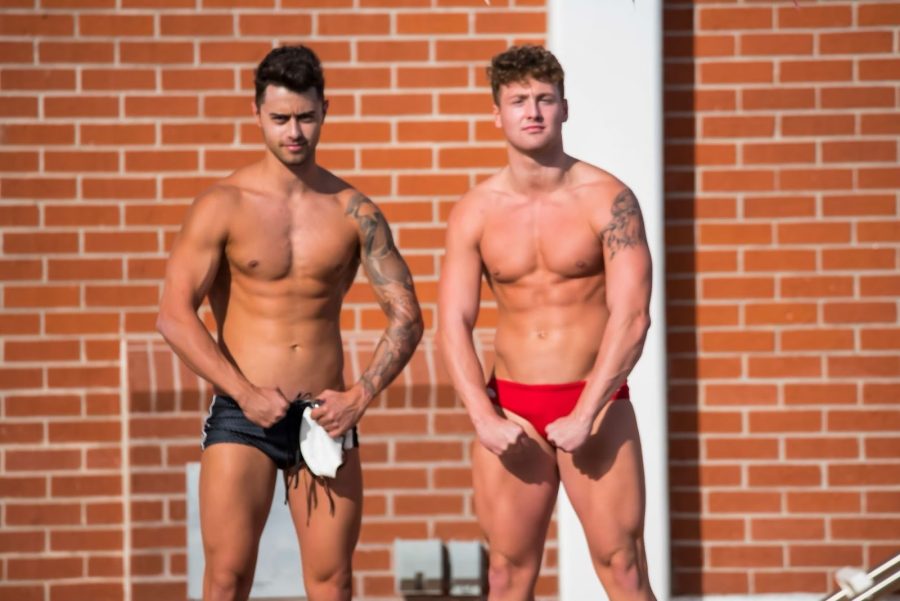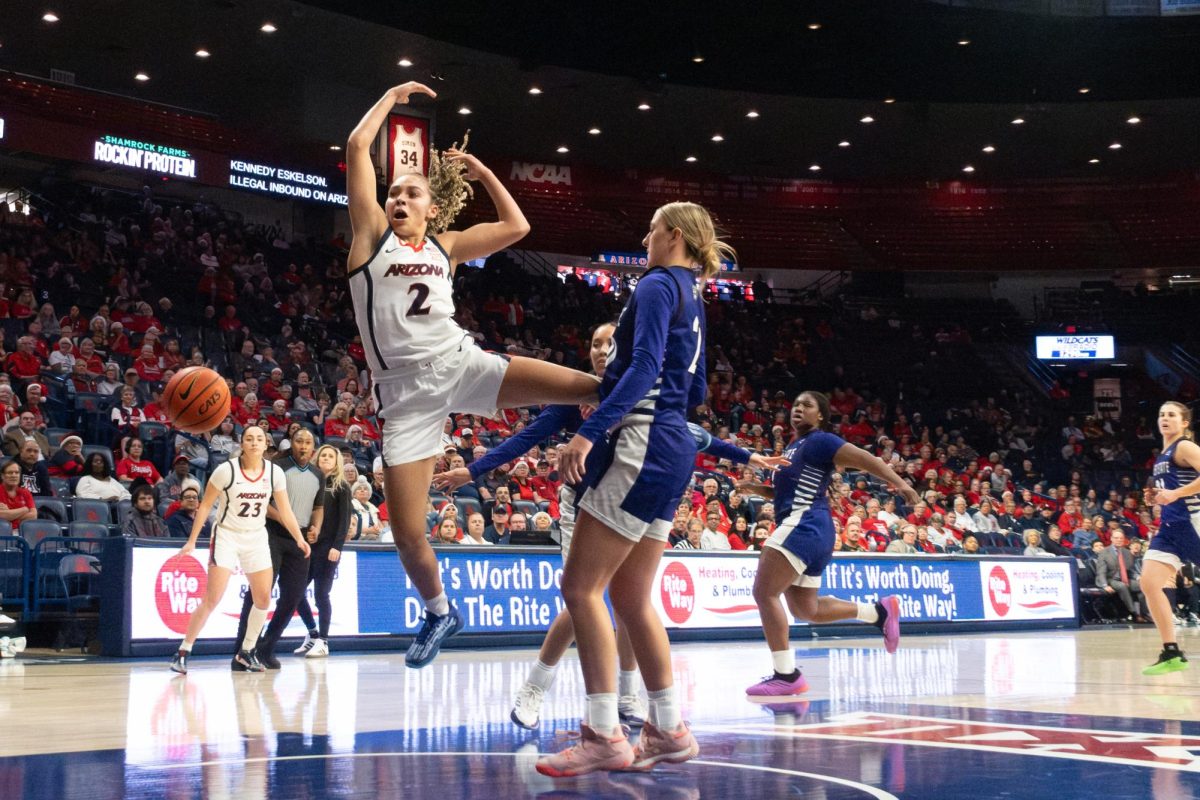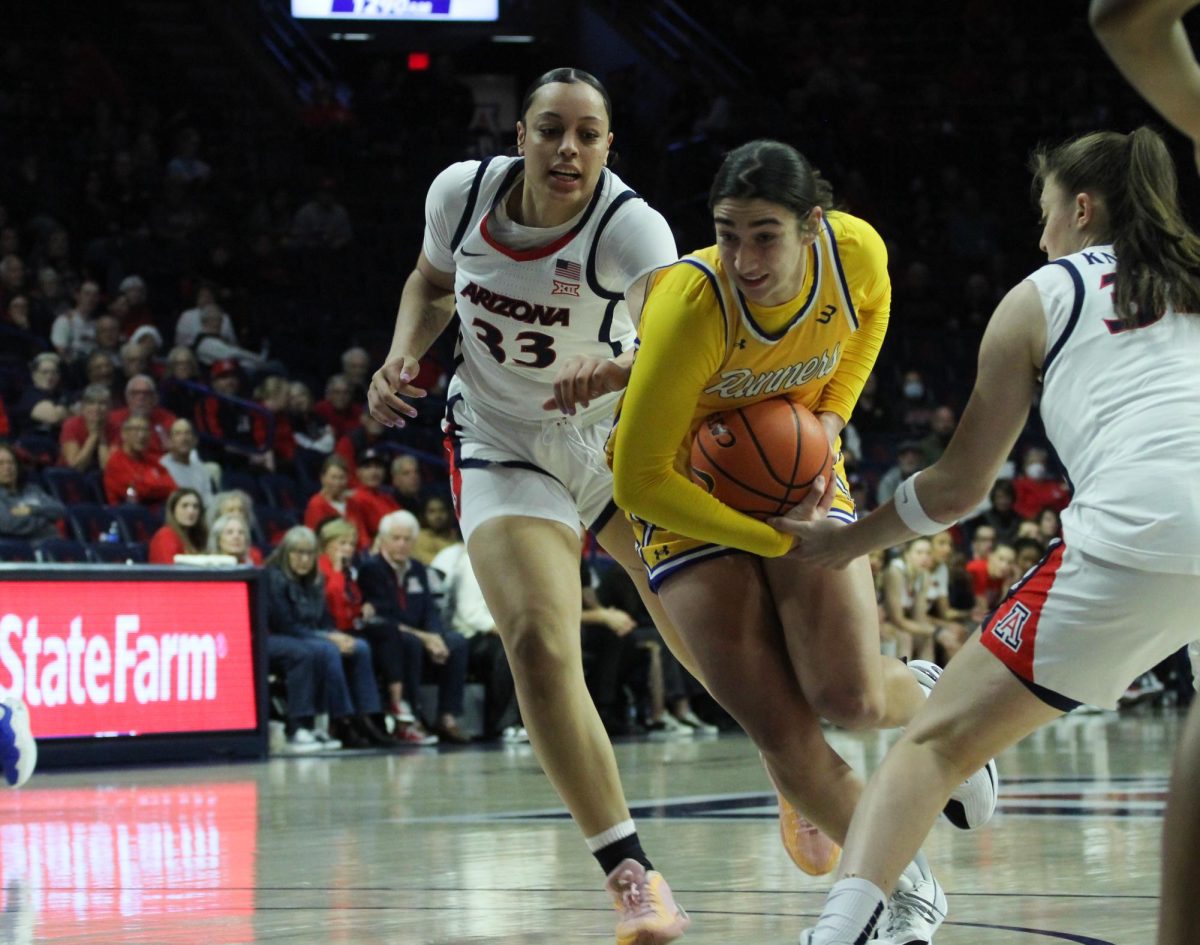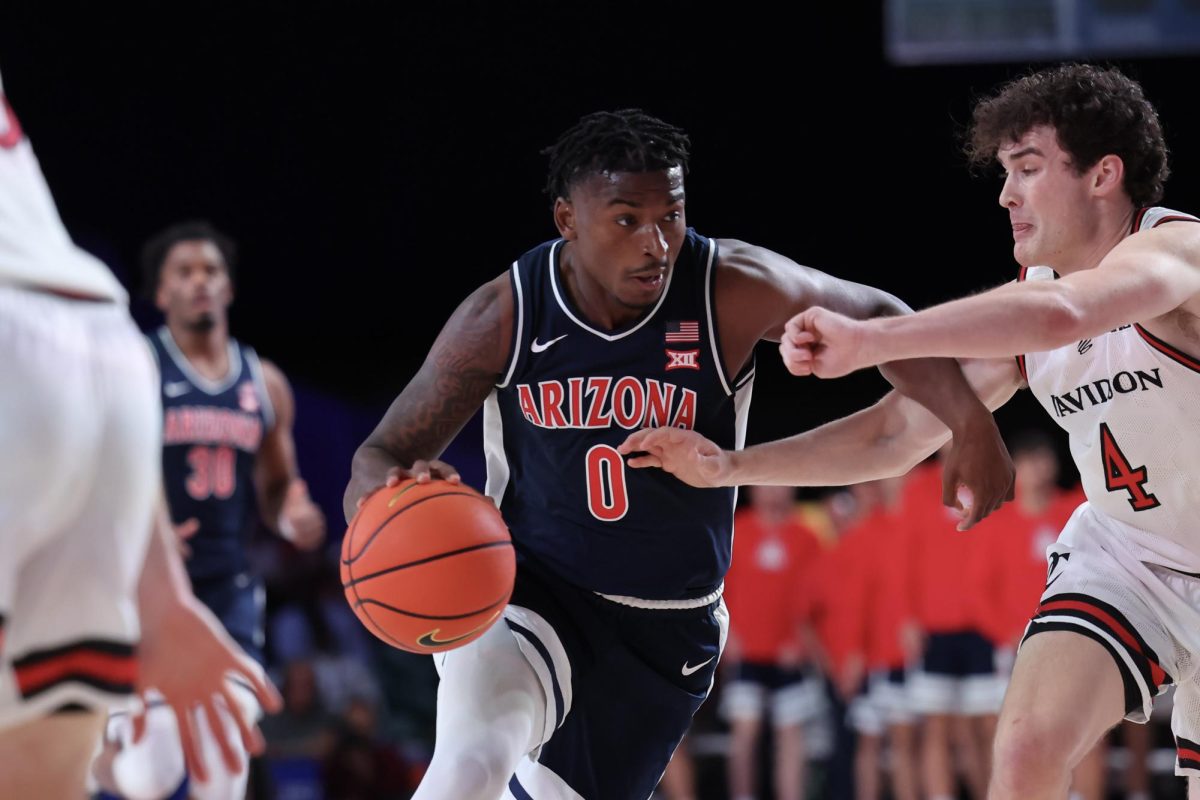As he turned his graduation tassel on a cold winter day, Daniel Namir, a 2020 Olympic swimmer for Israel, put down his Arizona swimming and diving speedo and became a full-time professional swimmer. Now he’s training for a chance at the 2024 Summer Olympics in Paris.
Originally from Netanya, Israel, Namir said he dedicated himself to swimming when he was just four years old. His life was training until 2015, when he enlisted in the military for three years before committing to the University of Arizona soon after. The discipline he learned from those years helped him become an Olympian.
“I think my past experience helped me a lot, because in Israel I had to do military service for three years so I had to combine that with swimming, which helped me with time management,” Namir said.
Once he got to Arizona, Namir shook up the swimming world. In 2019, he qualified for CSCAA All-American in the 200 free and 800 free relays and an NCAA Qualifier in the 200 free and 500 free.
In 2020, the Israeli National Team qualified to compete in the 4×200 freestyle relay in Tokyo, which led Israel to a 5th-place finish in the first heat of the preliminary rounds while besting Israel’s previous record time by over three seconds.
Namir has been training for Paris 2024 and the Israeli World Championship team since his graduation.
A day in the life of an Olympic swimmer
Olympians are among the hardest workers in the world, and understanding the reality puts it into perspective. A day in Namir’s life is a well-balanced mix of hard work, dedication and discipline.
His seven-day-a-week schedule is broken up into eight training sessions, four lifts, two to three dry-land workouts, physical therapy and yoga. The most strenuous days are Tuesdays and Thursdays, where there are two training sessions each day. Sunday is his only day off to rest and recover for the upcoming week.
Namir shows that Olympic athletes aren’t born, they’re made.
6:45 a.m.: Wake up
To get a jump on his day of training, Namir wakes up around an hour and a half before practice to eat a solid breakfast to get ready for the day in front of him. He needs to fuel his body correctly, so he opts for a breakfast that is neither too heavy nor too light, like a bagel, eggs and coffee.
8-9:30 a.m.: Lift
Each lifting day is different so as not to overwork key muscles and let them rest properly. This Thursday was a lower-body day, so he focused on a mix of cleans, deadlifts, front squats and some core work. All of that is followed by some light stretching and then it’s off to the pool deck.
9:30-11:30 a.m.: First swim
Diving straight into the pool, Namir is ready to swim. He starts by doing warm-up laps followed by some pull training, kicks, drills and turn work. Swimmers use all sorts of equipment when warming up like fins, snorkels, kickboards and swim paddles. Augie Busch, the head Arizona swimming and diving coach, has a particular philosophy when it comes to training.
“We here at Arizona have a group-oriented setup in terms of how we train. Each coach has their specialty,” said Busch.
11:30 a.m.-3 p.m.: Lunch and nap
As soon as he’s dry, he stuffs in post-workout snacks like a protein shake and beef jerky and heads home. Then, it’s lunch and nap time to recover for the next session. A strawberry Powerade and tuna salad are his lunches. He toasts the bagel and piles on the tuna salad.
After he devours his food, he fits in a quick, restful nap. He says it’s his favorite part of the day.
“Sleeping, 100% sleeping. I’m a big napper,” said Namir.
3-5 p.m.: Second swim
Once he’s back at the pool, he changes into his speedo once again. For practice two of the day, his specialty group focused on aerobic work along with power efforts. One of the most exhausting forms of endurance work is the power tower.
Around three times a week, Namir does the same dry-land workout he has for years. He stretches out his body with foam rolling, then gets the heart rate up by jumping and running and, finally, he works on the smaller muscles. He needs a strong stretching and rolling routine, racking up about 10,000 yards in a double day and around 40,000 yards in a week.
After practice, his coaches give him an Excel sheet analyzing his races and studying his performance to identify areas for improvement.
5-7 p.m.: Dinner and Netflix
When he gets home from practice, he cooks dinner with his girlfriend. They made salmon bowls with brown rice, avocado, cucumbers and spicy mayo. They turn on a quick Netflix show as they eat and relax. Not for long, though.
7-8:30 p.m.: Coaching
After his highly long day, he coaches at Arizona Club Swim, a campus recreation team run by the University of Arizona. He spends his hours there teaching little kids, a few of whom aspire to be like him one day. To keep his mental and physical health fresh, he organizes his life and focuses on the present.
“Probably the biggest thing that I learned is that whenever you focus on school, you have to focus on school. Whenever you focus on swimming, you have to stick with swimming. Don’t try to mix those worlds together, like, don’t think about work while you have practice. Just split those two worlds apart,” Namir said.
8:30-10 p.m.: Relax
To decompress from the day, he turns on his Xbox and fits in a little “Call of Duty: Warzone” session. After he gets his fill of video games, he turns off the lights and dozes off, freestyling into his dreams only to do it again tomorrow.
*Ashley Reynolds is a student studying at the University of Arizona School of Journalism taking the JOUR 306: Advanced Reporting class.
Follow the Daily Wildcat on Twitter









